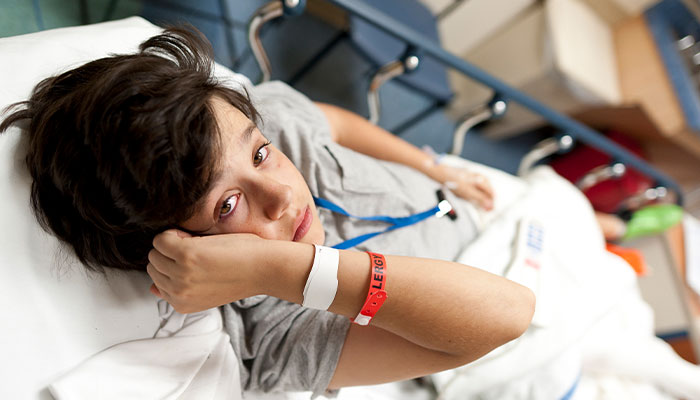Soon your fridge will check how fresh your vegies are, how many eggs are in the rack and how much milk is left. Then it will wirelessly connect to an automatic ordering system, which will in turn wirelessly place an order and pay for home delivery.

Food for thought: Grocery shopping could be a thing of the past, as smart fridges create shopping lists and even place an order for you.
Just about everything you can imagine will be measured by such sensors, and the data will be transmitted wirelessly. This hard-to-fathom massed web of linked devices is known as the Internet of Things, or IoT, and developing it is one of the biggest challenges facing Macquarie University’s engineering researchers.
“People are talking about trillions of devices,” says Professor Iain Collings, Deputy Dean of Macquarie University’s School of Engineering.
“It’s not just about monitoring our living spaces or the external environment. It includes buildings, air-conditioning systems, energy use, car use … just about any activity you can imagine.”
To run such a vast system, we’ll need a whole new wireless network – 5G (as in fifth generation). “5G hasn’t been fully specified yet – the standards are being written now,” Collings says. “But one of the key elements is that it needs to be able to support the Internet of Things.”
Wireless networks... are much more stringent, much more difficult at these higher frequencies. And it’s requiring a lot of new research
The network will have to be able to handle data rates from the very low (such as a wireless water meter that occasionally transmits a small amount of information) to the very, very high (such as fully rendered, high-definition, constantly streamed 3D graphics).
It will need to have extremely low transmission delay – for instance, to ensure safety in fully automated, driverless vehicles. The transmission delay will need to be less than anything currently available. And, critically, it will need access to new areas of transmission space, because the spectrum in which transmissions currently occur is running out.
“How to unlock new bits of spectrum is one of the things we’re working on here,” Collings says. “Most currently available spectrum is in the range under 10 gigahertz (GHz). We’re at the forefront of looking at what you can do with much higher frequencies – 60GHz, 80GHz and higher.”

Future focus: The challenge is turning ideas for news wireless products into a reality, says Professor Collings.
These higher frequencies will require new antennae design and a range of new electronics, including amplifiers, signal processors and technologies to electronically "steer" the antennae.
“These challenges exist for current wireless networks,” Collings says. “It’s just that they’re much more stringent, much more difficult at these higher frequencies. And it’s requiring a lot of new research.”
Not surprisingly, Collings' vision of the wireless future is dynamic and transformative. He says that connecting people – for instance through teleconferencing – will be “in as realistic an environment as is possible”.
“Looking at a flat screen is good now. But ultimately you’ll want to put on a pair of glasses that’s transmitting ultra-high definition in 3D into your eyes, realistically putting you in the office at work or in the classroom with all the other students, in real time. This is the stuff that’s got the potential to overcome pollution issues and traffic-jamming, because it will mean that you really can work at home.”
Collings concedes that talk of such an amazing future is “the sexy stuff ”. He and Macquarie’s engineering researchers work at the business end of such dreams.
“We take a couple of steps back and say, ‘so what is going to enable this to happen?'"
Professor Iain Collings is Deputy Dean of Macquarie University’s School of Engineering - read more about his expertise here.



